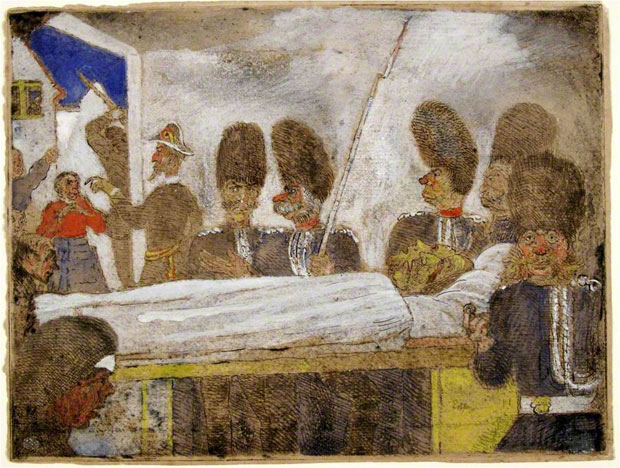Eighteen months ago we at the Getty Research Institute decided to give our website a complete overhaul.
A small group formed and spent the first three months looking through hundreds and hundreds of pages on our site. We talked, and then we talked some more. As we continued to talk and dig, we asked ourselves how we might present nearly 8,000 pages of content that range from the California Video exhibition, which examined the development of video art in California, to the Getty Provenance Index® databases that can trace an artwork’s ownership history as far back as the 1500s.
After much head-scratching, and with the guidance and counsel of many colleagues within the GRI and the Web team, we made it our goal to further deepen this rich and vast array of art historical resources and make them as easily accessible as possible.
The new site, which debuts today, has a lot of rich, new content designed to do just that. Here are just three of the many new features we hope you’ll find useful.

Betty Asher and Henry Hopkins in Front of Ed Ruscha’s Painting Los Angeles County Museum on Fire, photographer unknown, ca. 1960s. Betty Asher papers, 1860–1999. The Getty Research Institute, Gift of Michael Asher, 2009.M.30
1. See Our Special Collections
The GRI vaults contain a treasure trove of resources that include prints and drawings, rare books and manuscripts, early photographs, historical archives, architectural models, optical devices, and video art. With the new Special Collections section of the site, you can view some of these fascinating and inspiring materials for yourself.
A Highlights section offers an overview of the principal subjects and themes of our collections. Some of these take art historical research into unexpected areas, such as the books and manuscripts on alchemy based on the collections of Manly Palmer Hall, a leading scholar in the fields of religion, mythology, and mysticism and the founder of the Philosophical Research Society in Los Feliz.

Chemical purification through sunlight and moonlight, 1606. From Claudio de Dominico Celentano di Valle Nove, Book of Alchemical Formulas (Naples, 1606), pp. 8–9. Manly Palmer Hall Collection of Alchemical Manuscripts. The Getty Research Institute, 950053 box 22
A New Acquisitions and Donations section presents the most recent additions to our special collections. Currently, we feature a number of important archives that shed light on dealers, galleries, and collectors in Los Angeles. Among these recent donations are the papers of gallerist and collector Betty Asher, which were given by her son, artist Michael Asher. We also have the papers of gallerists Riko Mizuno, Rolf Nelson, and Patricia Faure.
This section also features important recent donations of individual works, such as James Ensor’s The Gendarmes, donated by Collections Council Chair Dr. Richard A. Simms.

The Gendarmes, James Ensor, 1888. The Getty Research Institute, Gift of Dr. Richard A. Simms, 2010.PR.10 © 2010 Artists Rights Society (ARS), New York / SABAM, Brussels

Kaufmann House, Palm Springs, CA, 1947. Richard Neutra, architect, by Julius Shulman
2. Browse Digitized Resources
Another new section of the site, Digital Collections, allows instant access to a wide range of GRI materials. For example, you can view a sample of the massive Julius Shulman Photography Archive, which spans his 70-year career as Los Angeles’s most prolific architectural photographer.
These striking images explore works by California-based Modernists Richard J. Neutra, Rudolph Schindler, and Gregory Ain, as well as other architects working across Southern California and the United States.
3. Find Primary Sources
The Research Guides and Bibliographies section provides overviews of our collections and specialized areas of research.
For example, the Surrealism in Latin America Research Guide, which was developed from scholarship produced by the organizers of the Surrealism in Latin America research project, includes a list of related GRI holdings such as journals, rare books, photographs, artworks, and the archival papers of key poets and critics as well as a select bibliography with links directly into the library catalog records.
This guide includes important primary research sources such as the papers of Peruvian poet and artist César Moro. A relatively unknown figure, Moro was the first Latin American artist to participate in Breton’s Paris-based Surrealist movement.

Title page of Lettre d’amour, César Moro (with frontispiece print by Alice Rahon), 1944. The Getty Research Institute, 980029
This is just a small sample of what we have available on our new site. The GRI is a gathering place for art historical researchers from all over the world—and similarly, we hope our new website will be a gathering place to share our resources and the results of their work with all of you.
We’d love to hear what you think of our new site!




Wow, can’t wait to spend more time looking at everything that’s available. Although I doubt I can look at everything! Way to go, Lizzie. Very cool.
Liz, this is very good work, very useful stuff on so many levels. Even though ars longa, I better start browsing.
LIZ Well done you have many links to explore and great information. I will truly keep busy researching all this information. Thank you!
This is great! Beautiful to look at, fascinating to read!
Endless resources to dive in…
Thank you!
This is an amazing accomplishment, Liz. Have not yet exhausted all the extensive links to the various sites. I am still watching videos from the 70’s and 80’s on the New Media link. Really wonderful.